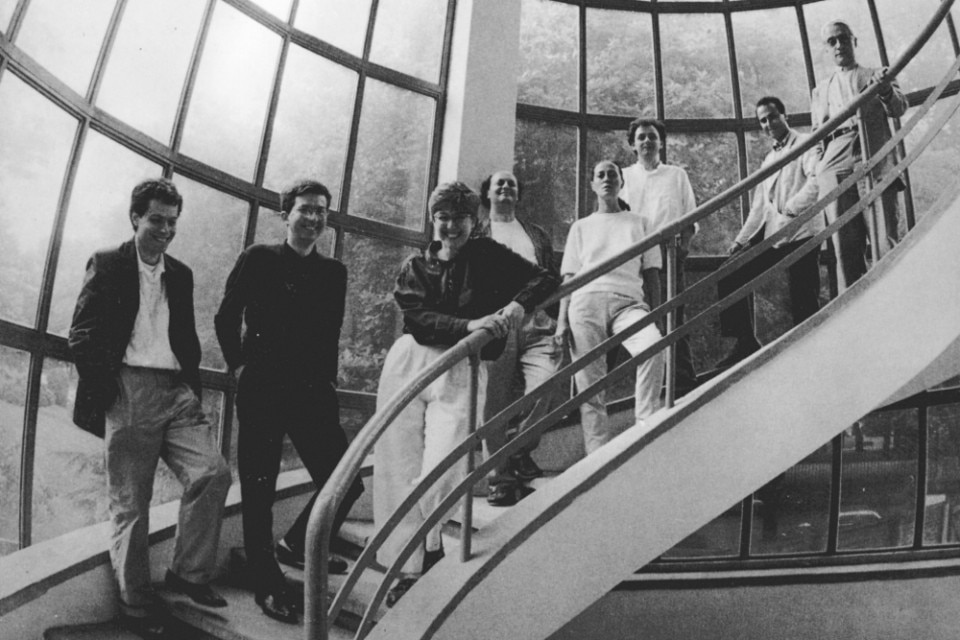Founded in Milan in 1976 by siblings Alessandro and Adriana Guerriero, the planning and design atelier Studio Alchimia was the first example of a group of designer-producers who worked through dialogue, experimenting in various fields: from the creation of design objects and architectural projects to performance art, theatricals and fashion design, from the production of experimental videos and sounds to seminars and books.
Initially called Studio Alchymia (a term later replaced for reasons of recognisability), the post-radical avant-garde collective was one of the most vibrant of its time and specialised in the design and small scale production of designer objects and furniture, as well as producing and disseminating experimental ideas through exhibitions and installations in Italy and abroad.
In combining a practical approach with design theory, Studio Alchimia developed an environmental and psychological research into objects, defining a new theory of “romantic design” that took the name New Modern. This attitude is also reflected in the name of the project, which refers to the alchemical process of turning lead into gold. In the words of its founder, Alchimia is “the search for a unifying principle, the idea of a universe that contains all things, from the Greek to cast, to pour together” to create “objects of function and emotion”.
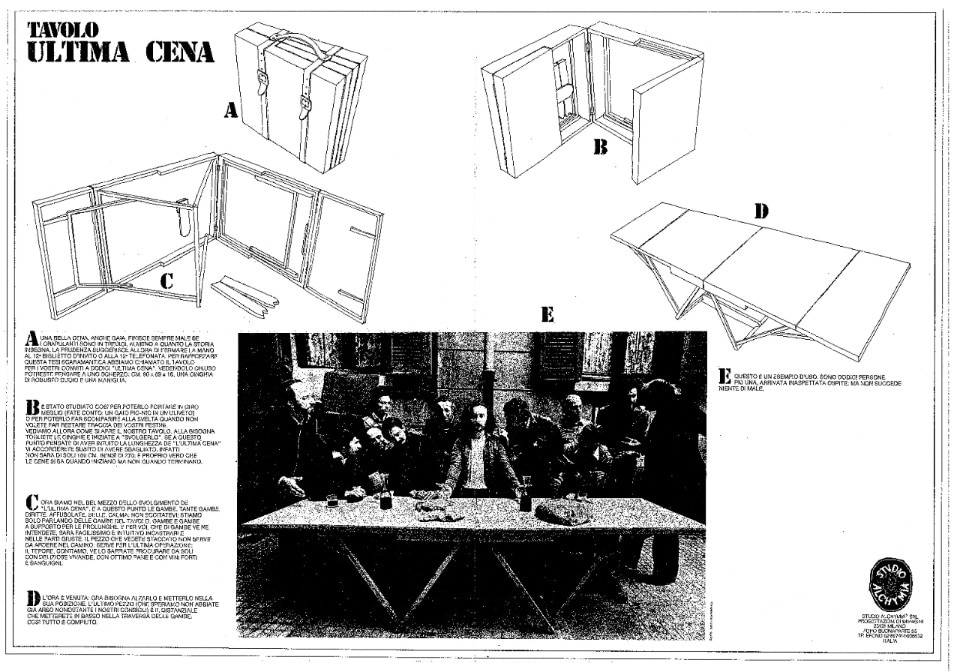
The movement was animated by the most significant figures of the time – among others Alessandro Mendini, Ettore Sottsass Jr, Bruno and Giorgio Gregori, Michele De Lucchi, Andrea Branzi, Paola Navone, Daniela Puppa, Franco Raggi, Cinzia Ruggeri, Paolo Portoghesi, Riccardo Dalisi, Magazzini Criminali, Metamorphosi, UFO and some leading figures of the Transavantgarde – but what took place in Studio Alchimia were not collaborations to be intended as executive interventions, but rater as creative and design contributions of collaborators operating independently in the same direction.
Today’s men and women live in a state of turbulence and imbalance, but above all what characterizes their lives is detail: organisational, human, industrial, political, cultural fragments... This age of transition sees them immersed in indefinite fear due to the disappearance of many values considered as certain. We need to find ourselves again. Alchimia works on values considered negative, weakness, emptiness, absence and the profound, today understood as secondary things compared to what is external, full and violent, as things to be removed.
Alessandro Mendini
Born in the midst of the crisis of values of the post-modern era and having inherited the social criticism introduced by Radical Architecture, albeit modelled on a different atmosphere from that of Sixty-eight, Studio Alchimia marked the evolution of Italian design thanks to its poetic, self-reflexive and eclectic vocation, which aimed to challenge the pre-established order and the idea of normality, tracing its raison d’être outside the box. The group was opposed to specialisation in favour of an interdisciplinary approach that favoured the mixing of genres (painting, sculpture, architecture, theatre, applied arts), styles and techniques (from craftsmanship to industry, to information technology).
Far from the established rules, Alchimia’s unconventional attitude was aimed at praising the ordinary and the unexpected, ornament and decoration, what is playful and curious, with the provocative intention of proposing a “design make-up”, a “ceremonial and totemic object”.
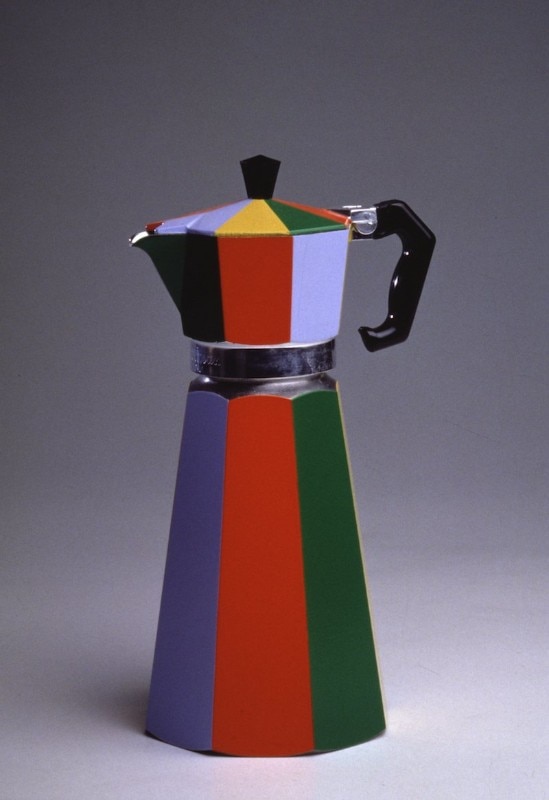
“In the age of the multiple ‘post’ we have happily entered (post-modernism, post-avant-garde, post-industry), a significant role is played by the furnishing objects (furniture, chandeliers, carpets...) produced by Studio Alchimia, which stands out for its formula of producing a new furniture collection every year, giving long life to the company without letting it get lost in the fragmentary nature of the single episode”, commented Renato Barilli, defining the Studio as “design of images for the 20th century” (Domus, no. 607, June 1980).
The result of this approach is the theory of “banal design”, introduced by the Studio as an operation of systematic recycling: “there is no need to invent something new, it is rather necessary, with an alchemic effort, to redeem old formulas and styles and modules already used in the past, which have fallen into ‘popular’ banality, moving in the opposite direction to architecture which wants to impose the concept of the new as a unifying module”, wrote Barilli in Arredo Alchemico (Domus, no. 607, June 1980); an attitude in step with its own time, in which the advance of photography, advertising graphics and window dressing was interpreted by the group as an opportunity to embrace the creative and popular culture of the time.
The creations of Studio Alchimia are objects, architecture and paintings that are both normal and abnormal, “each of which fulfils some “function” and groups together an indefinite number of elements that decorate and disguise each other [...] with the possibly endless combination of the hallucinations, enchantments and abysses present in our minds” (Jasper Morrison and Francesca Picchi in Domus, no. 1050, October 2020). The Studio theorised the definitive crisis of design, which was replaced by the imaginative language of drawing (“To exist without designing” was one of the group’s slogans). The importance given to drawing was focused on visual thinking, inspired not only by the objects but by everyday life itself, in a lively and playful interpretation. It was the founder Guerriero who put this practice at the centre, inviting numerous designers of the time – Mendini, Sottsass, De Lucchi and Branzi, among others – to design something for him and his newly established studio.
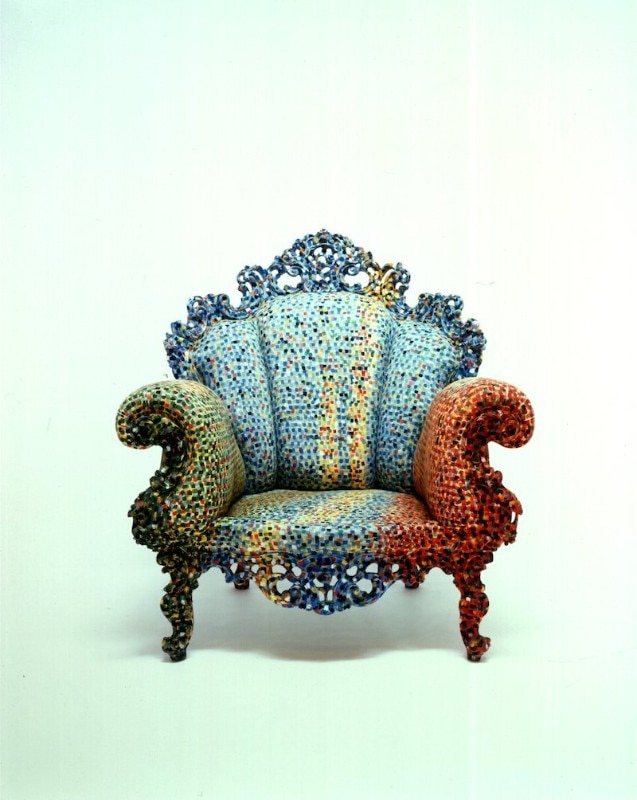
“For Alchimia you never know whether you are making sculpture, architecture, painting, applied art, theatre or something else. The project acts ambiguously outside the project itself, in a state of wastefulness, of disciplinary, dimensional and conceptual indifference: the project is just exercise in drawing”. “For Alchimia, its task as a group that draws is to deliver to others a testimony of “sentimental thought”. The motivation of the work does not lie in its practical efficiency, the “beauty” of the object consists in the love and magic with which it is proposed, in the soul it contains”, reads the 1984 Manifesto of Alchimia signed by Mendini, the group’s “spiritual father” and alter ego of Guerriero, who joined the group in 1978.
There can be a theory of the ‘authentically false’. We could conceive a banal design methodology, a culturally familiar neo-banal design and architecture. A possible shocking card to play at the time when all ‘post-modern’ design methods are marking time.
Alessandro Mendini
In the logic of self-production, objects with ironic shapes and titles were created within Alchimia, often accompanied by philosophical texts, such as the fake fireplace Fuoco di S. Antonio (1976) or the table Ultima cena (1975-77), which, folded, becomes transportable “to allow the impetuous wandering of the divine in the world”, Guerriero declared. “Their component of qualunquism brings them into everyday life, into reality and into the need for flattening, their component of exception detaches them from habit and connects them to the need for the unexpected” (Mendini, 1984). Through these projects, the group tackles the concepts of mediocrity and stylistic amorality as revolutionary thoughts, looking at the petty-bourgeois world by interpreting it not only as a class but as a “generated and generalisable condition”, points out Tommaso Trini.
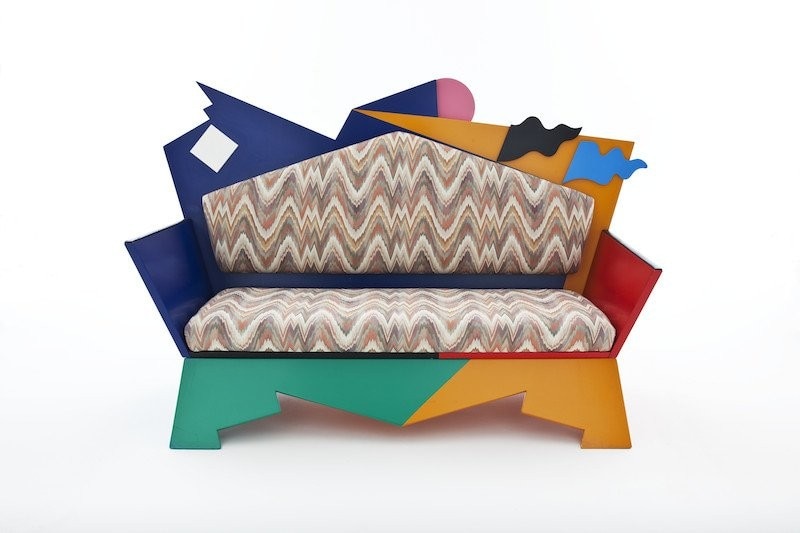
The year of the debut of Studio Alchimia’s first collection of furniture was 1978, with the exhibition entitled Bau.Haus one, followed by Bau.Haus two in 1980, a parodic title-tribute to Bauhaus that broke away from the rational and functional principles of the movement and was intended as a founding statement of the group. Objects included the futurist sofa dedicated to Kandinsky (Divano Kandissi) and the famous dot-coloured baroque armchair dedicated to Proust, both by Mendini; as Barilli recounts, the Poltrona Proust “represents the very denial of the concept of design, the anti-design excess of kitsch, suddenly materialised in flesh and blood” (Domus, no. 607, June 1980).
Another emblematic example is Mobile Infinito (1981), which consists of a series of cabinets, bedside tables and drawers with magnetic decorations that can be combined in an infinite composition, created with the attempt to “obtain a non-mediocre result from a set of mediocre conditions”, recalls its creator Mendini.
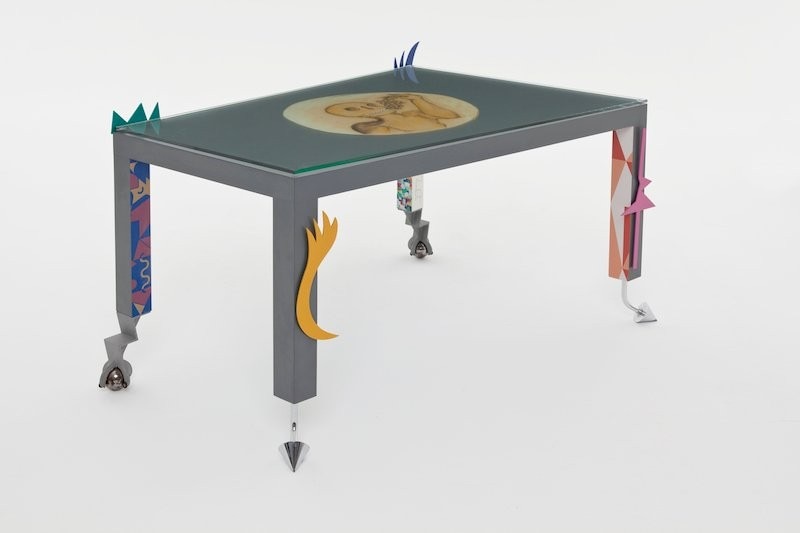
The ideas of infinite modularity exhibited on that occasion would find further development in a research conducted with Studio Alchimia and produced by MIM-Geres presented in September 1982 at the MIM showroom in Milan. The futuristic exhibition consisted in the representation of the problem of the office and the problem of work and its spaces through the re-design of “Eulero”, an office furniture system that was highly flexible and infinitely combinable, that is, made up of customised cubicles, “where the anonymity of space will be replaced by a psycho-technological office” (Domus, no. 642, September 1983).
On the one hand, they produced re-designs of famous projects or those of great designers and artists, and on the other hand, they intervened on everyday objects, as was the case with the work presented at the Venice Biennale in 1980, where Alchimia participated in the exhibition “Oggetto Banale” (Banal Object), curated by Mendini. Here objects, houses, construction details, furnishings and situations that represented the real places of banal iconography were placed, offering the possibility of reading it in a constructive rather than denigrating way. Arturo Quintavalle commented on the exhibition as follows: “it is wrong of the middle class not to take this “banal life” into account, because the direction to follow in research is this culture of furniture, the reference civilisation – the koine, the Greekist would say – of our civilisation of objects” (Domus, no. 612, December 1980).
Among the sectors in which Alchimia invested was also fashion, which saw Domus magazine at the forefront, launching for the first time in 1981 the project “Domus Moda”, two experimental supplementary issues of No. 617 and No. 621 that gave space to Studio Alchimia, the designers of Memphis and Elio Fiorucci (Domus, no. 1014, June 2017). Precisely Fiorucci’s shop in Milan would be be the protagonist in 1982 of the action Arredo Vestitivo, a window performance in which Mendini exhibited his “clothing furnishings” or “furnishing clothes”, with some models in the window wearing wooden dresses made by Alchimia.
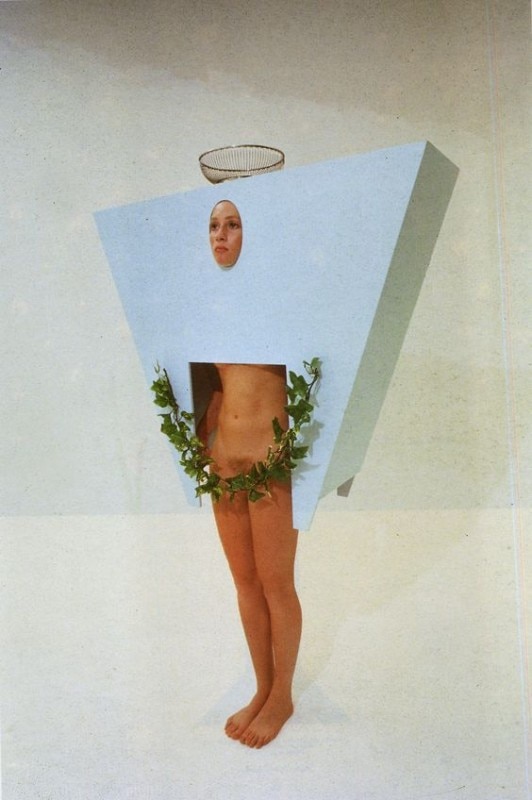
Between 1981 and 1982, Studio Alchimia collaborated with Domus together with Occhiomagico – a studio founded in 1971 that worked on photography, seeking experimental interactions between the world of photography and other arts – producing twenty-four covers for the magazine. Thanks to this collaboration, Domus gained a reputation as an innovative magazine in terms of both content and iconography. The partnership between Alchimia and Occhiomagico was so close that it became impossible to define the boundary between the two, in a total contamination of languages that looked to symbolist, surrealist, metaphysical and psychedelic experiences: the covers did not show the projects and products but the authors, like a fashion or music magazine (on some occasions Alchimia also worked with the world of music, for example on the occasion of the collaboration with Matia Bazar, for whom Cinzia Ruggeri created the futurist green silk dress Homage to Lévi-Strauss in 1983, for the cover of the song Aristocratica).
You don’t really know what design is anymore and talking about design doesn’t work for you; rock saved your life. Then, it seems to you that a piece of furniture or a book or an exhibition by Studio Alchimia ought to be like going to a Talking Heads concert or watching Lighting Over Water, I mean that the feelings are very strong, that projects and designs resonate in your head at maximum volume for a long time and even after a while you can’t hear what the girl you are with, and whom you’d like to go back home with, is telling you.
Stefano Casciani
Studio Alchimia was awarded the Compasso d’Oro in the Design Studio category in 1981 for design research, the same year in which, in the wake of this artistic-design experience, the Memphis group, founded by Ettore Sottsass, Barbara Radice and Michele De Lucchi, was born. Breaking away from Alchimia, the group took a different path: “Alchimia has always expressed itself in a problematic, multidisciplinary manner, engaging in situations of doubt, criticism and self-criticism. Memphis took the path of the strong, calm, reassuring image of the establishment” (Mendini, Scritti, Skira, 2004).
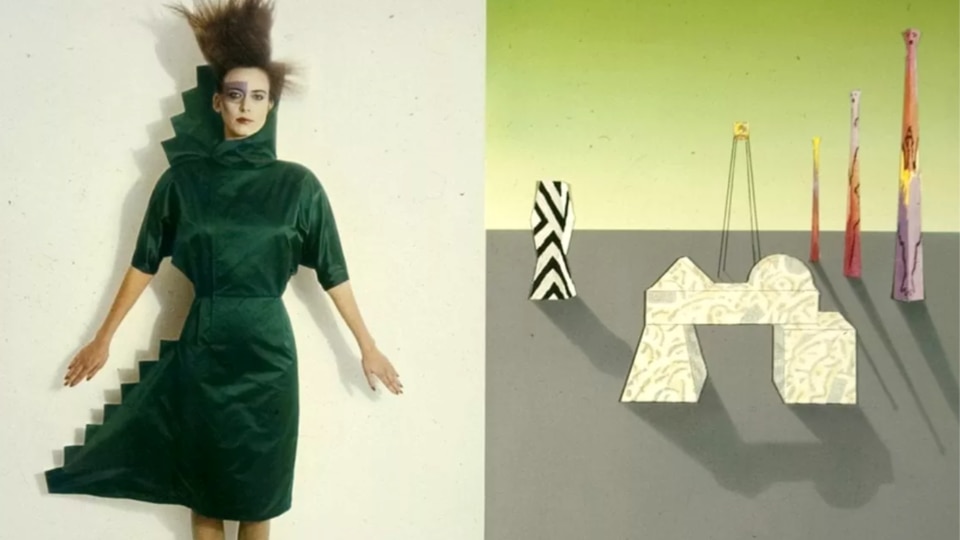
Alchimia’s activity went on with numerous other projects, including the Ollo lamp (Guerriero, 1988), the Falsi mobili (1991) and the projects for Torre Civica in Ghibellina (Mendini and Guerriero, 1987). Shortly afterwards, the Museo Alchimia was founded in Via Torino in Milan: in thirty years, what was initially intended to represent the desacralisation of the modern object – and of the idea of design related to it – ended up being definitively consecrated. As Guerriero recounts, “the Museum was born in the early 1990s, and it was the first sign of our self-destruction, that is, of the fact that we began to see ourselves as something from the past and therefore as something that was coming to an end”.
Studio Alchimia ended its activities in 1992 upon the decision of its founder Guerriero, who concluded the experience with a performance organized by him in a basement in Via De Amicis in Milan.
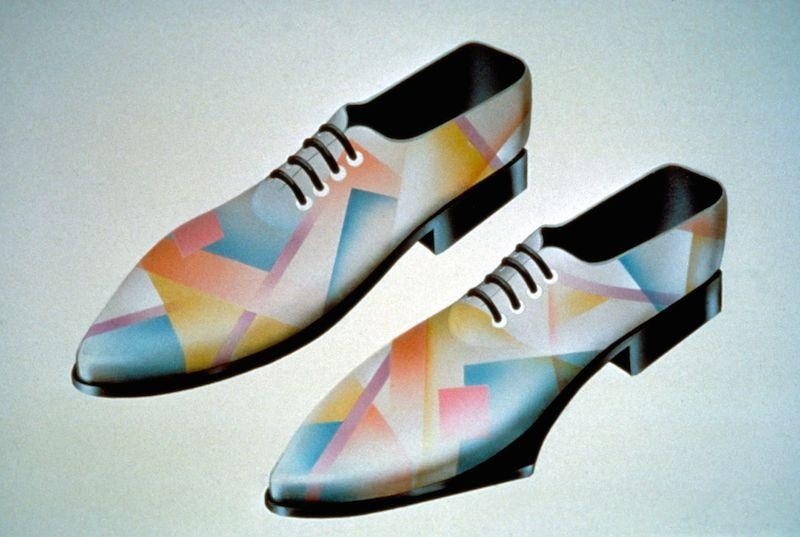
This eclectic group, marked by a spirit of confusion capable of creating new paradigms and anticipating the contemporary encroachment between different disciplines, lives again today in exhibitions and in the works of the time, often readapted into contemporary productions. In Nuove intenzioni del Design (1982), Stefano Casciani defines the group as “a nowhere land or Utopia that is not easy to explain, because you cannot explain this way of listening and responding immediately in this continually interrupted conversation”.
Opening image: Alchimia group photo, 1986. From bottom to top: Bruno Gregori, Pier Carlo Bontempi, Carla Ceccariglia, Alessandro Guerriero, Adriana Guerriero, Arturo Reboldi, Giorgio Gregori, Alessandro Mendini. Photo Alfa Castaldi


